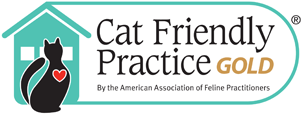Library
-
Diazepam (brand names: Valium®, Diastat®, E Pam Tab®, Meva®l, Vivol®) is used as a muscle relaxant, anti-anxiety medication, appetite stimulant, and an anti-seizure medication. It is also used as a preanesthetic in hospital. It is used off label to treat anxiety, seizures, tense muscles, or decreased appetite. Give as directed by your veterinarian.
-
Diclofenac ophthalmic is a topical nonsteroidal anti-inflammatory medication used to treat inflammatory eye conditions in cats, dogs, rabbits, avian species, and other animals. Diclofenac ophthalmic comes in liquid drop form.
-
Digestive lubricants and hairball gels (e.g., Laxatone®) are oil-based lubricants that are given as supplements to help prevent and eliminate hairballs in cats. They come in oral gel format and are available in several flavors.
-
Digoxin is used off label and is given by mouth or injection to treat certain abnormal heart rhythms and certain types of congestive heart failure. Common side effects include vomiting, diarrhea, lack of appetite, weight loss, tiredness, or behavior changes.
-
Diltiazem is given by mouth as a tablet, capsule, or compounded liquid, and is used off label to treat abnormal heart rhythms, high blood pressure, and other heart conditions. Common side effects include a slow heart rate in dogs and vomiting in cats. This medication should not be used in pets with hypersensitivity, severely low blood pressure, lung congestion, or certain abnormal heart rhythms.
-
Dimenhydrinate (brand names: Dramamine®, Gravol®, Travtabs®, Driminate®, Triptone®) is an antihistamine used to prevent motion sickness and to treat nausea, especially in dogs with vestibular disease. It has also been used for its sedative properties and to reduce itchiness associated with allergies.
-
Dinotefuran + pyriproxyfen (brand name Vectra) is a topical (spot-on) antiparasitic drug used to repel and kill fleas in dogs and puppies that are at least 8 weeks of age and weigh at least 1.14 kg (2.5 lbs) and in cats and kittens that are at least 8 weeks of age and weigh at least 0.9 kg (2 lbs). Do not confuse this medication with Vectra 3D®, a similar product labeled for use in dogs only.
-
Diphenhydramine is given by mouth or as an injection and is used on and off label to treat allergic reactions, motion sickness, and to induce sedation. Side effects include sleepiness, and less commonly dry mouth and gastrointestinal upset.
-
Diphenhydramine topical (brand name Benasoothe®) is an antihistamine with some local anesthetic properties. It is used to relieve itching and skin irritation in dogs, cats, and other animals. Diphenhydramine topical comes in a variety of forms, which may be specially compounded.
-
Diphenoxylate + atropine (brand name Lomotil) is an opioid combination medication used to treat diarrhea or coughing in dogs and diarrhea in cats. Its use in cats is not generally recommended. Diphenoxylate + atropine is given by mouth in the form of a tablet or liquid. This article discusses administration, potential side effects, risks, and monitoring.



